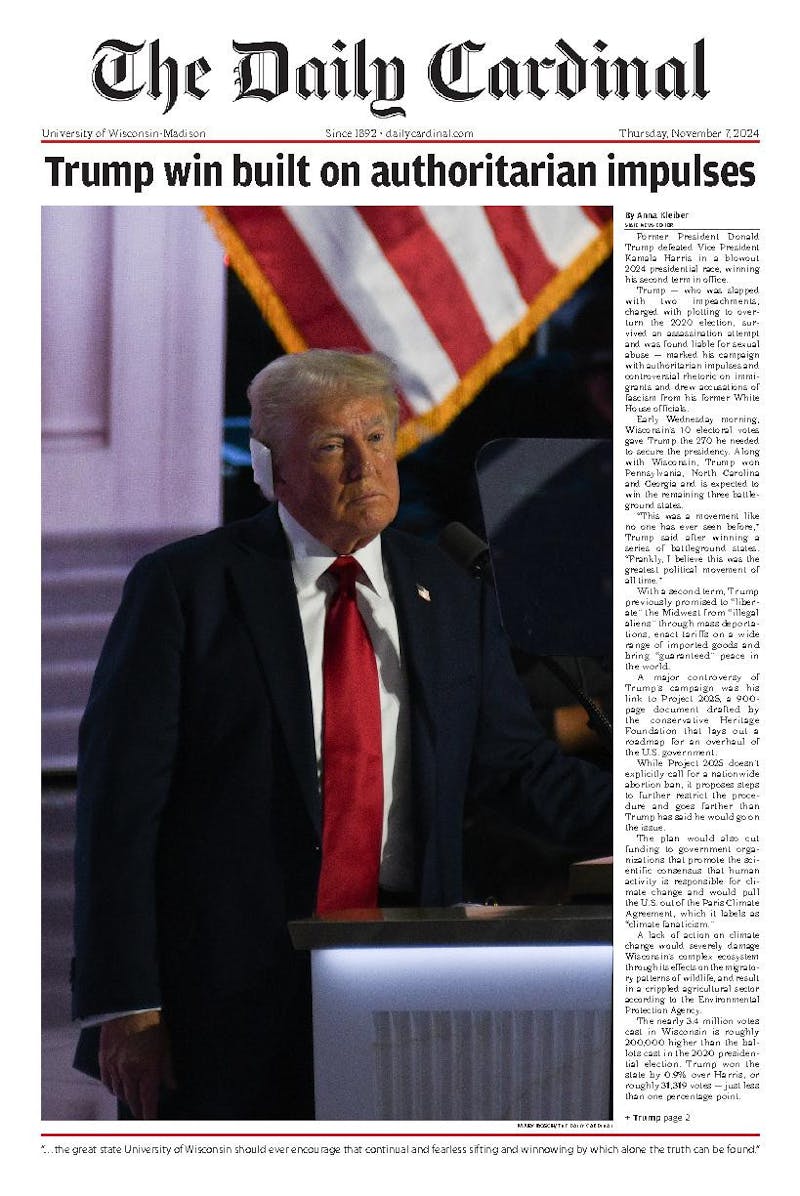Community members asked for swift action on pollution reductions at a Wisconsin Department of Natural Resources hearing held Wednesday on a proposed rule to reduce mercury air emissions in Wisconsin.
The public was invited to give oral statements at the hearing at a state office building, 101 S. Webster St., on a proposal that requires coal-burning power plants to reduce emissions in phases of 30, 50 and 90 percent over a 15-year period.
The majority of the public making oral statements on the proposal agreed with Madison resident Todd Hanson, who said, 'the 15-year timeline is too lax.'
'The proposal needs to be strengthened,' said Keith Reopelle, Wisconsin Environmental Decade program adviser, who added that public safety concerns are some of the main reasons that the standards need to be strengthened.
Many speakers voiced their frustration with not being able to eat fish out of Wisconsin lakes for fear of mercury poisoning.
'I encourage [the DNR] to act as rapidly as possible to put the fish in Wisconsin back on people's plates,' said Kurt McCloy, a former UW-Madison professor.
The DNR has stated that one reason for the proposed rule is that mercury is transported across state borders, and it hopes Wisconsin can help lead a broader mercury-reaction initiative by setting an example for other states to follow. The DNR would be responsible for a report on the progress being made to the state Natural Resources Board every 18 months.
'The EPA and other states [will be able] to look at what Wisconsin does and encourage action elsewhere,' said Brian Gumm of the UW-Madison Center on Wisconsin Strategy, an economic research institute.
One alternative to the 15-year plan presented by the DNR included a 10 percent reduction in mercury emissions by 2006 and then a 90 percent reduction by 2010, while another called for a 10 percent reduction by 2007 and then a 40 percent reduction by 2012. A third option was a voluntary program where companies would decide by themselves on how to reduce mercury.
Under all of the DNR plans, major utilities would be required to apply developing pollution control technologies to their facilities or make a switch from coal to another fuel to keep mercury admissions below the established ceiling and achieve pollution-reduction goals in the time period allotted.
Wisconsin Utilities Association Inc. said in a statement, 'The 90 percent reductions called for by the rule are impossible to comply with without shutting down coal plants, which will threaten reliability and dramatically increase utility bills.'





